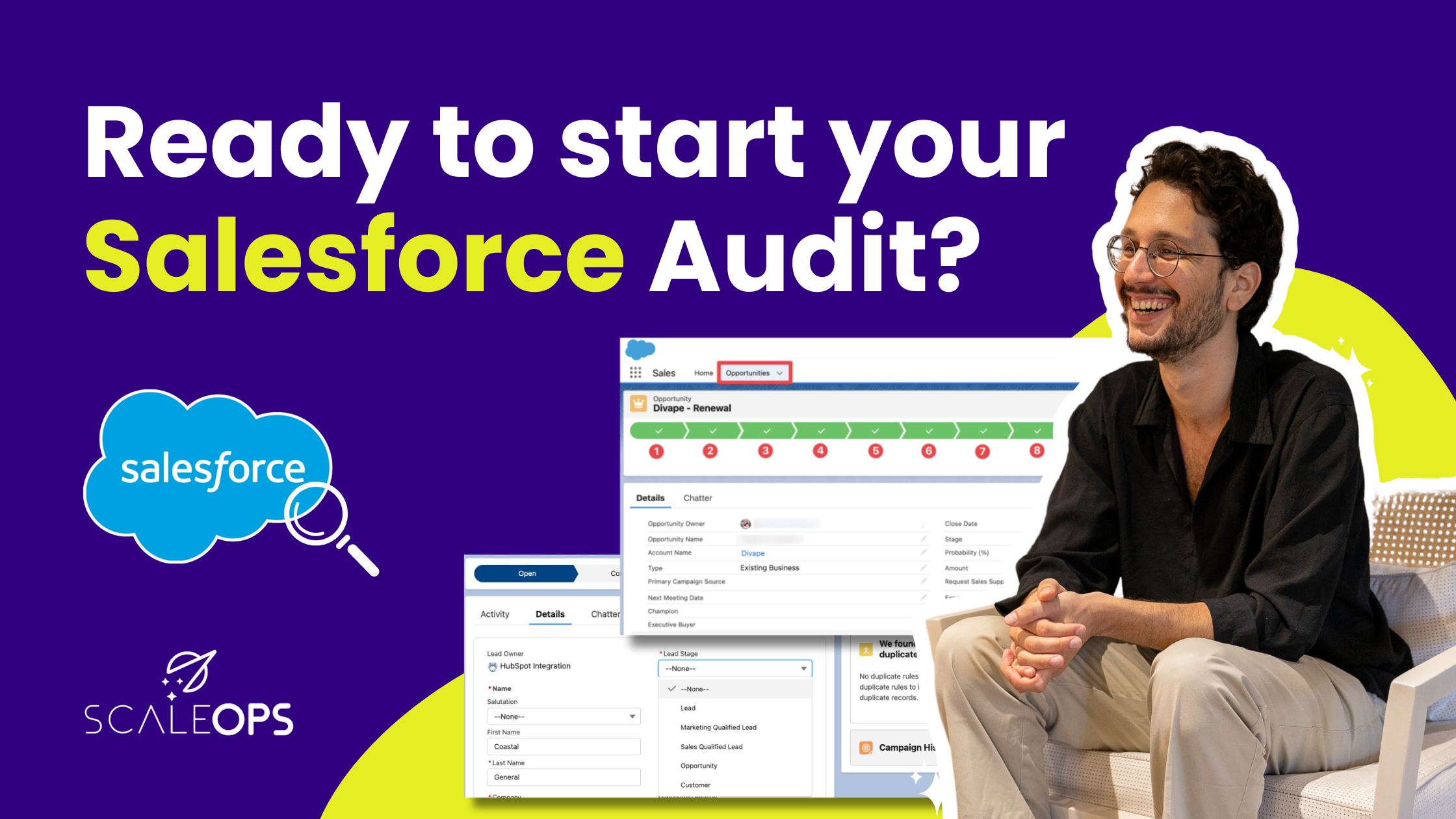Time for Your Yearly Salesforce Audit? Here’s What You Can Expect
When it comes to Salesforce, recurring problems can be frustrating and disruptive. A well-executed Salesforce audit is designed to give you a full view of your system. This will help you understand why issues like unreliable reports, missing crucial data, and undefined sales or marketing processes keep surfacing.
Birds-eye-view on your CRM system
Whether you're missing crucial data in your CRM, your reports are unreliable, or don’t have a well-defined sales process and it’s causing leads to fall through the cracks - it doesn’t have to be this way. These are all systems issues and they can be solved!
Your salesforce is like a machine, and like any machine, it often needs a tune-up. An audit allows for a birds-eye-view, So you can understand the core issues in your system and how to fix them.
An audit provides a detailed examination of your Salesforce setup, including data quality, automation, processes, and reporting. This comprehensive view helps you pinpoint core issues that might be affecting your entire system.
By reviewing your system, the audit reveals why certain problems persist. Whether it’s unreliable reports that fail to provide accurate insights or crucial data that’s missing, the audit highlights these issues so you can address them effectively.
What to expect in a Salesforce audit
Auditing your Salesforce gives you the opportunity to uncover and address system issues. The initial audit can take between 10 and 15 hours, while a deep dive may take up to two weeks or more. It depends on your data, processes, and so much more. Even an initial audit sets the stage for a detailed roadmap outlining your next steps to improve your system for the months ahead. You'll dive into your system to diagnose any issues, from data quality to process inefficiencies.
As you identify problems, you may see a quick-fix solution that you can implement on the spot, however, some fixes are multi-step and require a game plan to execute. Our advice - get a clear picture of what you need to fix, then, rate the urgency of each task. Once you have that clearly identified, you can make a list and order of tasks based on priority.
Bonus: To guide you through this, we put together a comprehensive template, ensuring you have a clear path to follow throughout the audit process. You can download it here.
Next steps - Building your 12-month Roadmap for Success
The findings from your audit will guide you in making strategic improvements. Whether it’s refining your data management, optimizing automation, or clarifying your processes, you’ll have a clear roadmap to follow.
Not all issues need immediate attention. The audit helps you prioritize based on impact and urgency, allowing you to address the most critical problems first.
Post audit, implementing control dashboards and regular check-ins will help you keep track of improvements and ensure that the system remains in good shape.
Documenting best practices and providing training based on audit findings will help your team handle future challenges effectively and maintain system health.
Get started with our full audit toolkit
To make your Salesforce audit process smoother, we've put together a comprehensive template designed to help you dive into key areas of your system. This audit is a powerful tool for identifying and addressing persistent issues such as unreliable reports, missing data, and undefined processes. It provides a clear roadmap for improvement, setting you on a path to greater efficiency and success.
Access the template here.
If you need any assistance along the way, we’re here to help. Happy auditing!



Comments